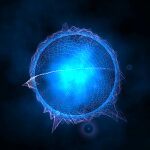Link to HAL – pasteur-03699904
Link to DOI – 10.1109/ISBI48211.2021.9433951
2021 IEEE 18th International Symposium on Biomedical Imaging (ISBI), Apr 2021, Nice, France. pp.375-379, ⟨10.1109/ISBI48211.2021.9433951⟩
Calcium fluorescence imaging enables real-time activity monitoring of single neurons in living animals. A critical inverse problem resides in the precise inference of spike locations from noisy fluorescence traces, especially in the presence of burst spiking and non-linear fluorescence intensity. Several spike extraction algorithms have been proposed in the recent years, but a robust and objective evaluation of their performance still remains elusive due to the unsupervised nature of the problem. Here we propose a biologically-inspired mathematical framework to reproduce synthetic fluorescence traces from a time-series data of spike-trains. The idea is to create a versatile platform to objectively test the state-ofthe art spike inference methodologies over a large range of experimental parameters. Our solution appears as a complementary but more exhaustive approach to determine the robustness of existing solutions to different nature of signals, imaging artefacts, sensitivity to hyper-parameters and pre-processing steps. We benchmark state-of-the-art algorithms with the proposed simulation platform, and validate the results on an experimental dataset of the Hydra Vulgaris. We hypothesize that, in contrast to the common practice of qualitative evaluation, quantitative measure of algorithm robustness is essential in understanding the suitability of a spike inference algorithm to be used in an automated computational pipeline to decipher the neural code.





